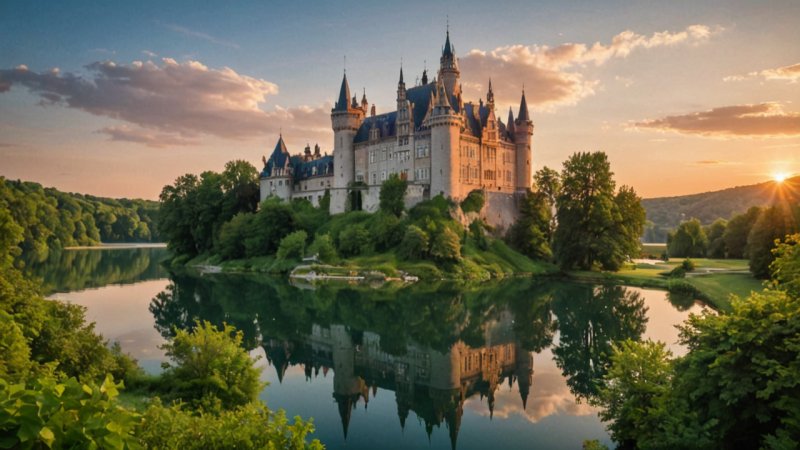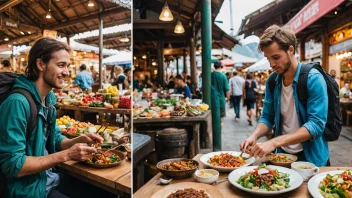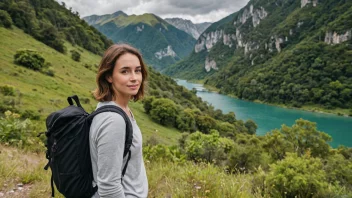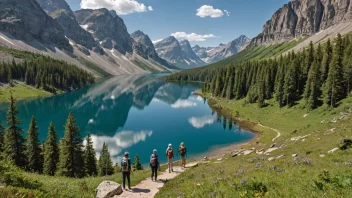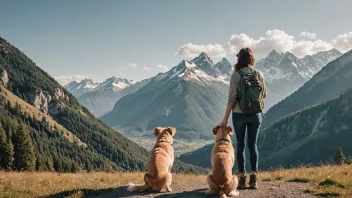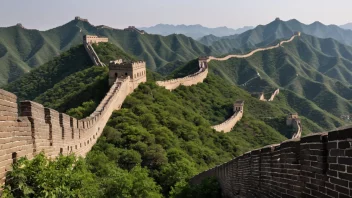In the realm of travel and photography, few subjects are as captivating as the majestic castles scattered across Europe. To delve deeper into the art of capturing these architectural wonders, we sat down for a fictional interview with Isabelle Renard, a renowned expert in castle photography. Though purely imaginative, this conversation sheds light on the unique challenges and opportunities that come with photographing some of the most photogenic castles in Europe.
Understanding the Allure of Castles
Interviewer: Isabelle, what draws you to castles as a subject for photography?
Isabelle Renard: Oh, the allure of castles is undeniable! They embody history, romance, and mystery. Each castle tells a story, whether it's about royalty, battles, or architectural evolution. When I photograph them, I aim to capture not just their physical structure but the essence of their past. The contrasts of stone against the sky, the play of light and shadow—they all contribute to the narrative.
Best Times to Photograph Castles
Interviewer: What would you say is the best time of day or year to photograph these structures?
Isabelle Renard: The golden hour—just after sunrise or before sunset—is magical for castle photography. The soft, warm light enhances the textures of the stone and creates dramatic shadows. Spring and fall are ideal seasons; the colors of blooming flowers or autumn leaves serve as beautiful backdrops. However, winter can also be enchanting, especially when castles are covered in a layer of snow.
Unique Perspectives and Angles
Interviewer: How do you decide on the best angles and perspectives when photographing a castle?
Isabelle Renard: Each castle has its unique features that can be highlighted through various angles. I often explore the surroundings to find a vantage point that showcases the castle in its landscape. A low angle can emphasize its grandeur, while a higher perspective can capture how it fits into its environment. I also like to incorporate elements like trees or water to create depth and interest.
Challenges in Castle Photography
Interviewer: What challenges do you face when photographing castles?
Isabelle Renard: One major challenge is the crowds. Popular castles can be bustling with tourists, which can detract from the serene atmosphere. I often visit during off-peak hours or even consider going during the off-season. Weather can also be unpredictable; fog can add a mystical quality, but rain can be a headache. It’s about being adaptable and finding beauty in every situation.
Post-Processing Tips
Interviewer: What role does post-processing play in your castle photography?
Isabelle Renard: Post-processing is essential for enhancing the final image. I focus on adjusting contrast and saturation to bring out the colors and textures. However, I believe in maintaining the authenticity of the scene. I avoid over-editing—my goal is to keep the magic of the moment intact.
Favorite Castles and Experiences
Interviewer: Can you share some of your favorite castles to photograph and why?
Isabelle Renard: Absolutely! Neuschwanstein in Germany is a dream, with its fairy-tale design and breathtaking surroundings. I also love the rugged charm of Scotland's Eilean Donan Castle, especially at dusk when the lights reflect on the water. Each castle offers a different experience, but they all share an enchanting quality that makes them irresistible to photograph.
Advice for Aspiring Castle Photographers
Interviewer: What advice would you give to aspiring photographers looking to capture castles?
Isabelle Renard: First, immerse yourself in the history and significance of the castle you’re visiting. Understanding its story will inform your photography. Secondly, experiment with different techniques and don’t be afraid to get creative. Lastly, patience is key; sometimes the best shot requires waiting for the right moment, whether it’s the light, the weather, or the people.
Conclusion
Through our fictional conversation with Isabelle Renard, we glean valuable insights into the art and craft of castle photography. From the enchanting allure of these historical structures to the practical tips on timing, angles, and post-processing, aspiring photographers can find inspiration in the stories told through their lenses. Ultimately, capturing the beauty of castles is not just about the images created but also about the journey and experiences that come along the way.
